Craftsman Tool Stands
Craftsman tool stands were provided two basic configurations, one rectangular and the other square. These provided a wide variety of power tool mounting combinations. Many of these sturdy stands are still around today and you see them in many shops with vintage Craftsman tools.
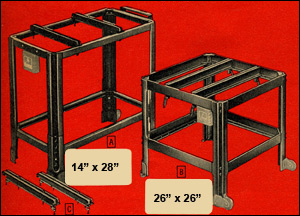 The image to the left is from a 1950's Craftsman tool catalog illustrating two of the tool stands available at that time. They were made of heavy gauge steel with pieces at the bottom that could be bolted onto the vertical legs to adjust the height of the tool stand.
The image to the left is from a 1950's Craftsman tool catalog illustrating two of the tool stands available at that time. They were made of heavy gauge steel with pieces at the bottom that could be bolted onto the vertical legs to adjust the height of the tool stand.
The horizontal pieces attached to the frame of the stand and included bolts to fasten a table saw or other stationary tool to the stand. These were heavy duty very sturdy tool stands.
The 14 x 28 inch version No. 10525 was adjustable for a 27 1/2" to 31 1/2" height. This stand was used for many Craftsman table saws, drill press, jig saw, and the band saw. There was also a 16 1/4" x 30" version.
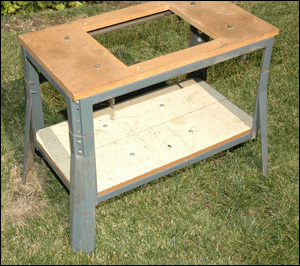 The 26" x 26" square stand, No. 1071 was 25" high and was best suited for radial arm saws and the Craftsman shaper.
The 26" x 26" square stand, No. 1071 was 25" high and was best suited for radial arm saws and the Craftsman shaper.
Craftsman offered additional parts that were recommended for mounting some power tools. The Craftsman Powr-Panl spells the safer way to hook up power tools, motor and tool lights. The switch  was convenient too, no more reaching over moving parts to turn the motor on and off. The toggle switch was located on the front of the receptacle box. It fit the Craftsman tool stands above as well as the newer pedestal stands. It came with brackets to mount to either wood or metal tool stands.
was convenient too, no more reaching over moving parts to turn the motor on and off. The toggle switch was located on the front of the receptacle box. It fit the Craftsman tool stands above as well as the newer pedestal stands. It came with brackets to mount to either wood or metal tool stands.
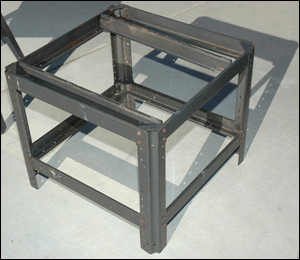 Other Craftsman stand add-ons included heavy duty caster sets for easy-rolling of tool benches and stands.
Other Craftsman stand add-ons included heavy duty caster sets for easy-rolling of tool benches and stands.
For tool mounting information see the the
Typical Applications for Craftsman Power Tool Benches and Pedestal Stands (Pdf. 5.7 MB)
Newer Craftsman Tool Stands for Table Saws
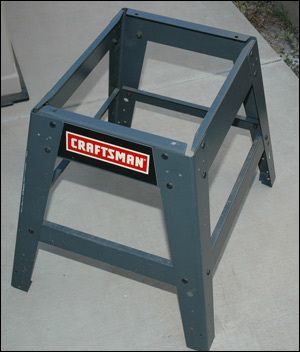 Newer Craftsman Tool Stands were made of heavy gauge sheet metal. Some had cross braces to add strength and stability.
Newer Craftsman Tool Stands were made of heavy gauge sheet metal. Some had cross braces to add strength and stability.
Others were simply the four legs connected with rails at the top and a flat portion for a saw base to be bolted
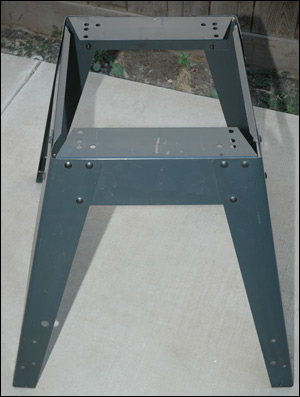
Craftsman Pedestal-Type Tool Stands
Craftsman Pedestal-type, power tool stands combined big, brawny strength with minimum space requirements. The heavy cast-iron base gave each stand maximum stability while the rigid tubular steel column and cast iron brackets kept the tool precisely level.
The motor mound clamped securely to the tubular column, enabling the motor to be positioned directly under the tool or at the rear. A tool stand guard provided safety protection from drive belts.
How to Link to This Page
It will appear on your page as:







